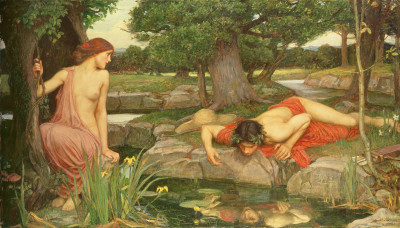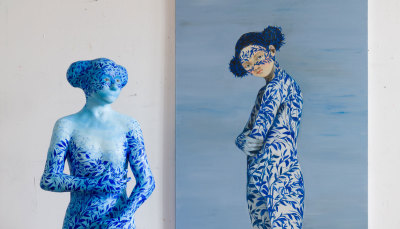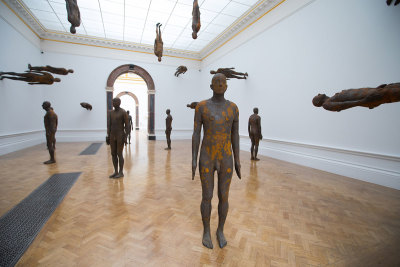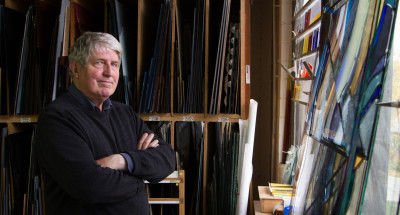A tribute to Geoffrey Clarke RA
By The RA team
Published 5 November 2014
A fellow Academician pays tribute to the celebrated sculptor, who has passed away aged 89
-
Geoffrey Clarke was a pioneer in British sculpture, his bold experimentation with materials and processes putting him right at the heart of a vibrant post-war art scene.
Born in Derbyshire, Clarke studied at Preston School of Art and at Manchester School of Art before serving in the War with the RAF. He returned to his studying at Lancaster and Morecambe School of Arts and Crafts, before attending the Royal College of Art. While studying stained glass here, he was selected to work on a monumental public commission – the windows of Coventry Cathedral.
Clarke had his first solo show at Gimpel Fils Gallery in London in 1952, the same year in which his work was included in the Venice Biennale with seven other British sculptors. His work was included in British Sculpture in the 1960s exhibition at the Tate Gallery. Similarly, he was selected for British Sculptors ‘72 at the Royal Academy of Arts and for British Sculpture in the Twentieth Century at the Whitechapel Art Gallery in 1981.
Part of a generation who led a sculpture renaissance in Britain in the 1950s, Clarke went on to make his name through experimenting with his materials, finding new and radical ways to use them. With his method of making his models in polystyrene and use them for direct casting, and experiments casting in aluminium rather than bronze, Clarke became one of the most commissioned British sculptors of the twentieth century. “As I have never had the feeling to model in clay or to use the traditional casting methods I realised that I must discover a more rapid and direct technique. A friend told me about polystyrene. And so since 1958 I have been working with polystyrene and aluminium,” he explained.
Clarke was elected to the Royal Academy in 1975. Fellow Academician and sculptor James Butler shares an anecdote on their time together:
“I suppose I first got to know Geoffrey when we were both serving on the [Summer Exhibition] Hanging Committee. Our work and sculptural language could not have been more different. We developed a mutual respect for our very different opinions. He and I were selecting the sculpture for a Summer Exhibition and Geoff had invited a particular work, a rather odd piece of a sort of horse and rider.
Geoff however, wanted it in the exhibition and that was OK by me. At the end of selection after the Hanging Committee had finished their job, the Council have to approve the Exhibition. Unfortunately they objected to Geoff’s horse and rider. He made a special plea for its inclusion but was over ruled.
Geoffrey had one of his own works quite close by and was so enraged by the Council’s decision that he destroyed his own work and dashed out. I caught him by the door and after much persuasion he came back in. Needless to say , the Council relented and Geoff won the day.”
James Butler pays tribute to his friend and colleague: “Geoffrey Clarke’s work is amazingly diverse, from large aluminium sculptures, cast by himself in a process devised by himself, to small bronze scent bottles. From large bronze and aluminium reliefs to delicate spidery little forms in relief and in the round.
It is hard to realise that Geoff is no longer with us , it is so sad to say adieu to a good friend and I wish him well in The Great Studio in the Sky.”
Obituaries in the press:
The Guardian
The Telegraph
The IndependentPlease note, for those who wish to attend, the funeral will take place on Monday 17th November at 11.15am. West Suffolk Crematorium, Risby, Bury St Edmunds, Suffolk, IP28 6RR. The email to RSVP is to Jonathan Clarke jc@jonathanclarke.co.uk
-

Geoffrey Clarke, Man, 1954.

Geoffrey Clarke RA pictured with Slab & Bar Relief, 1964

Geoffrey Clarke, Battersea II, 1962.

Geoffrey Clarke, Two Troughs and a Flat Bar, 1964.

Geoffrey Clarke, 1955








